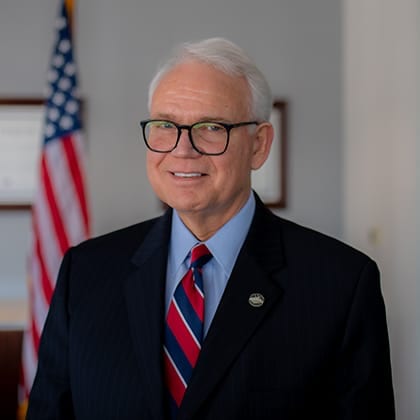
Written by Rick B. Larsen
February 21, 2018
Originally published in the Deseret News.
Truth in America is in trouble. For many of us, it is difficult to know what to believe anymore, and we are facing a crisis of trust in the media and in our institutions. There are reasons for this that we should be aware of.
One reason is the damage done to fact and reasonable debate by news-broadcasts-turned-news-channels. In an effort to fill the airtime and hold an audience, cable news pipelines are filled with the periodic news report, followed by hours of “expert” panels. These panelists can be informative. However, we should be aware that they routinely substitute opinion for fact and most are not speaking from a position of specific knowledge. This daily substitution of opinion for fact is changing our ability to recognize reason and truth.
Which leads to a second reason for a crisis of trust: On-air personalities no longer follow the rules of debate.
George Will refers to this when he writes, “When the length of news broadcasts increased from two hours to 24 hours per day, there was not a 12-fold increase in the amount of reported facts.” Instead, we see blurred lines between fact and opinion.
Recognizing that the failings of current media and political discourse are having a subsequent impact on truth is critical to the reclamation of truth. When Sutherland Institute encourages civil dialogue, it is not just for the sake of politeness; we are describing a process where engagement results in the discovery of truth.
The current situation is so significant it has become a matter of research by the Rand Corp. Rand issued a report on this topic, and the title tells you most of what you need to know: “Truth Decay: An Initial Exploration of the Diminishing Role of Facts and Analysis in American Public Life.”
“Truth decay is defined as a set of four related trends: First, an increasing disagreement about facts and interpretations of facts. Second, a blurring of the line between opinion and fact. Third, an increase in the “relative volume” and resulting influence, of opinion and personal experience over fact; and finally, a declining trust in formerly respected sources of information.”
What is the proper response to truth decay? It is important we rediscover how to gauge what we see and hear via media outlets, social media and even face-to-face conversation. We should recognize the signals that indicate fact is exiting the stage and opinion is taking over.
David Ferrer offers a valuable refresher on how debate is supposed to work. In his article “15 Logical Fallacies You Should Know Before Getting Into a Debate,” we are reminded of the guidelines for constructive argument and legitimate debate — principles, by the way, that modern news outlets and politicians break with impunity. Keep your eyes wide open for the two most common fallacies in political debate today.
Fallacy No. 1: ad hominem
When a debate suddenly turns from the issue to the character or integrity of a participant, this is an ad hominem … and it is more than just “bad form.” Ad hominem is Latin for “against the man.” When an argument turns from the logic and reason of a position and instead attacks the other person, the conversation is no longer an effort to discover the truth or seek agreement.
Viewers should be attuned to this as a failure in the legitimate argument process. It is a common breakdown among politicians, pundits and “surrogates” competing for screen time. It reveals a lack of substance on the side of the attacker and signals the point at which civil disagreement has descended into a fight.
Fallacy No. 2: the false dilemma
This fallacy, also known as “black-and-white fallacy,” “either-or fallacy” and “false dichotomy,” is a breakdown ignoring the possibility that two things can be true at once. It seeks to force us to accept that there are only two options. It avoids the possibility that there may be a range of options by oversimplifying issues and narrowing the range of solutions.
Think about debates over immigration and guns. When you hear talking points, do you ever find yourself almost screaming, “Why is it either-or? Can’t we approach these issues from several angles?” When an argument is designed to create a crisis or a choice between only two options, it is usually a manipulation.
There are more tactics and breakdowns to be considered, but the lesson is this: Properly structured debate is necessary to address the difficult conversations necessary to reach agreement on complex issues. When followed, these guidelines lead to outcomes like the Constitution of the United States. When ignored, we get to where we are today.
We can prevent truth decay by demanding rules of civil argument and debate. We can encourage them on a personal level. And we should demand them of media and elected officials. With a more informed view, we can then reward both leaders and news outlets, demonstrating respect for the rules of civil argument and debate.
More Insights
Read More
How transparent are school districts about curriculum?
Utah districts don’t need to wait for legislation to be transparent – many have sought to be transparent on their own. District leaders interested in this reform can do several things right away.
What you need to know about the upcoming state party conventions
The two major political parties are about to hold their state conventions. Here’s what you need to know.
Here’s why the First Amendment’s religion clauses are not in conflict
Some suggest there is a tension between protection for the free exercise of religion and the prohibition on the establishment of religion. But a better take is to see the two clauses as congruent.


